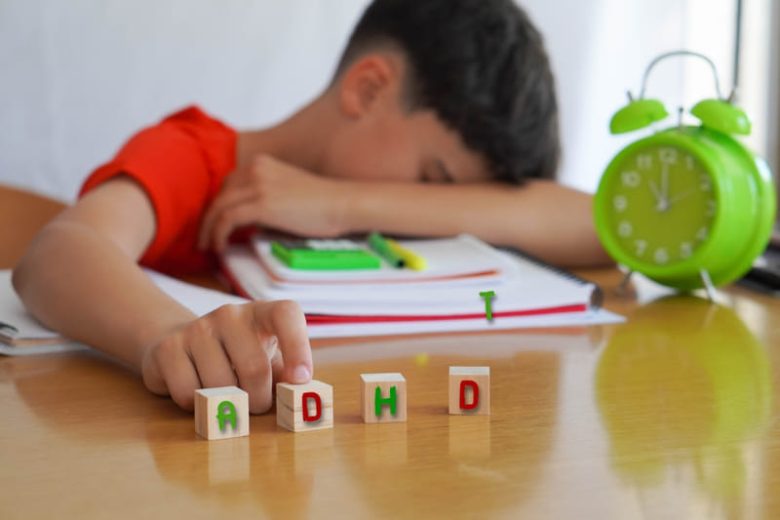As parents, we’re often tuned in to our children’s behaviour, especially when it comes to focus, energy levels, and emotional outbursts. But sometimes, what we notice in our kids can also reflect something in ourselves.
Attention Deficit Hyperactivity Disorder (ADHD) is a neurodevelopmental condition that affects focus, organisation, and impulse control. While it’s commonly associated with children, many adults live with ADHD too, often without even realising it.
Understanding the symptoms can help you spot the signs, whether in your child, your partner, or even yourself, and know when it might be time to seek professional support.
ADHD symptoms are usually grouped into three categories: inattention, hyperactivity, and impulsivity. However, the way these symptoms appear can vary depending on age, environment, and coping strategies. Keep reading to find out more!
#1 Symptoms of Inattention

People with ADHD often struggle to concentrate on tasks or manage time effectively, even when they have the motivation to succeed. This is not about laziness or lack of effort, it’s about how the brain processes information and prioritises attention.
Common signs of inattention include:
- Difficulty staying focused during conversations or tasks
- Trouble organising daily responsibilities, such as work or household chores
- Forgetting appointments, deadlines, or personal items like keys and phones
- Avoiding or delaying tasks that require extended mental effort, such as paperwork
- Becoming easily distracted by background noises, thoughts, or external events
These challenges can affect school or work performance, relationships, and overall confidence.
#2 Symptoms of Hyperactivity

Hyperactivity is often associated with children running around or being unable to sit still, but in adults, it can present differently. Adults with ADHD may feel constant restlessness or an inability to relax.
Signs of hyperactivity often include:
- A strong urge to move, even while sitting
- Fidgeting with objects, tapping feet, or shifting in place
- Talking rapidly or excessively in conversations
- Difficulty engaging in calm, quiet activities such as reading
- Feeling as if the mind is “always racing,” even when tired
For some, this restlessness can make it hard to unwind or sleep properly, adding to feelings of frustration.
#3 Symptoms of Impulsivity

Impulsivity can cause individuals to act or speak without fully thinking through the consequences. This can lead to mistakes, misunderstandings, or risky behaviour.
Examples of impulsivity include:
- Interrupting people during conversations
- Struggling to wait for a turn in queues or group activities
- Making snap decisions, such as impulsive spending or quitting jobs without a plan
- Reacting strongly or emotionally without pausing to consider the situation
- Taking unnecessary risks, especially when feeling bored or under-stimulated
ADHD in Adults vs Children
While children with ADHD often display obvious hyperactivity or trouble following instructions, adults may have more subtle symptoms. Instead of visible hyperactivity, adults might experience internal restlessness, procrastination, or difficulty managing time effectively.
Many adults develop coping strategies to mask their symptoms, such as relying heavily on reminders, working in short bursts, or multitasking constantly. These strategies can work for a while, but often they lead to burnout or stress, especially in demanding work environments.
The True Emotional and Social Challenges
ADHD not only affect focus, but it can also impact emotions and relationships. People with ADHD may:
- Feel overwhelmed by tasks that seem simple to others
- Struggle to manage frustration, leading to quick tempers
- Find it hard to read social cues or maintain friendships
- Experience feelings of low self-esteem due to missed deadlines or forgotten tasks
Recognising these emotional struggles is just as important as understanding the physical symptoms, as they often feed into each other.
When to Consider Professional Help

If these symptoms are interfering with your daily life, work, or relationships, seeking help is a wise step. An ADHD assessment can confirm whether ADHD is present and guide you towards the right treatment options.
An assessment usually involves discussing your symptoms, reviewing your history, and sometimes completing questionnaires or psychological tests. It’s not just about labelling a condition, it’s about finding strategies and support to make life easier.
Treatment and Management
ADHD cannot be “cured,” but it can be managed successfully with the right combination of approaches. Treatment often includes:
- Medication to help regulate focus and impulsivity
- Therapy or coaching to develop strategies for organisation and time management
- Lifestyle changes such as regular exercise, structured routines, and better sleep habits
- Practical tools like planners, timers, and digital reminders
Support from family, friends, or workplace adjustments can also make a big difference. Many people find that once they understand their ADHD, they can use their unique energy and creativity to their advantage.
Moving Forward With ADHD
ADHD is more than just being easily distracted; it’s a condition that affects how the brain processes information, manages impulses, and stays on track. The symptoms can vary widely from person to person, but understanding them is the first step toward getting the right help.
With the right diagnosis, practical tools, and consistent support, people with ADHD can thrive (at home, at work, and as parents). If any of the symptoms mentioned here sound familiar, getting assessed could be the first step toward a more balanced, manageable family life.

